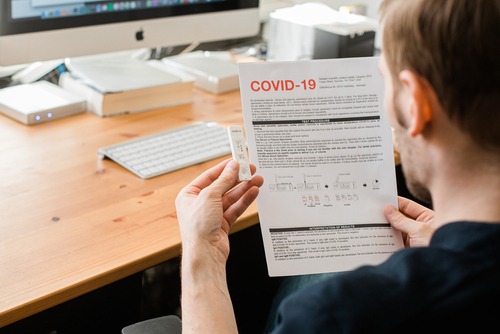


A brighter line indicates the patient has more virus in their body and is likely to be sicker and more infectious. A faint line also can mean the tester didn’t swab well enough to provide a good test sample. If the line is fainter, the patient is likely to be less sick, less infectious, or might be nearing the end of infection, Vail said. The opaqueness of the lines also can indicate more, Vail said. If the window on the testing stick shows two lines, the tester is positive for COVID-19. Plus, the test will only pick up if the virus is active in your body, meaning asymptomatic cases – when someone doesn’t have any symptoms – are harder to identify with the antigen recently interviewed Eric Vail, MD, director of Molecular Pathology, about the at-home antigen test for the virus that causes COVID-19 and how it determines whether the virus is inside the body and, if so, how much virus is there.Īt-home antigen tests work by detecting whether the virus is found in testers’ nasal secretions, Vail told. The rapid test is less accurate and there is a greater chance for a false negative. The rapid test can’t detect small amounts of the virus or asymptomatic cases as accurately as the PCR test can,” Heather said. “Unlike the PCR test, the antigen test can only determine if you have an active virus in your body. Helps slow the spread of contagious viruses like COVID-19 with quicker results.Easy enough to do on your own (There’s always a little room for user error, but as long as you closely follow the directions, anyone can test themselves with an antigen test.).If there are no antigens detected in your system, the liquid doesn’t respond and no line will appear, often meaning you are negative for the virus. The test strip acts like an antibody – if there are any COVID-19 antigen “bad guys” in your system, the molecules in the liquid will attach to those antigens, and a line will appear on the test strip.

When you give your nasal swab sample, it’s put into a liquid and then onto a test strip. Antibodies are the “good guys” that attach to the antigen protein (the “bad guys”) and fight the virus. The antigen test mimics what antibodies do. The rapid test, called an antigen test, checks for proteins that are found on the outside of the virus. This is because the PCR test is so sensitive it can detect even dead virus. PCR tests can stay positive for weeks sometimes after you’ve had COVID. The Centers for Disease Control and Prevention notes while tests are best used early in the course of illness to diagnose COVID-19, they are not authorized to evaluate the duration of infectiousness. PCR tests must be done by a health care provider, and they don’t produce immediate results, which means you may be waiting a few days to know if you’re positive or negative. While a PCR test is the preferred method of detecting COVID-19, it’s not always the easiest test to get. “PCR tests are more reliable and accurate due to testing the specific genetic material of the virus, eliminating the interference from other viruses,” said Heather Seyko, a Laboratory Services manager for OSF HealthCare. The PCR test doesn’t alter your genetic material – DNA – in any way, and your test provider isn’t able to do anything with your DNA besides tell if you’re positive with COVID-19. Even if you have a small trace of the virus in your system, the PCR test will detect it. Amplifying RNA helps to make even small traces of the COVID-19 virus visible in the test sample. The PCR test takes a sample of ribonucleic acid (RNA) and “amplifies” it with the help of lab technologies. Both tests require a sample from the patient, usually a nasal swab. Two types of COVID-19 tests are popular: the polymerase chain reaction (PCR) test and the antigen test, a.k.a. What’s not so clear is which kind of COVID-19 test is the best. The message is clear: Get tested, as it’s one of our best defenses against stopping the spread of COVID-19.


 0 kommentar(er)
0 kommentar(er)
